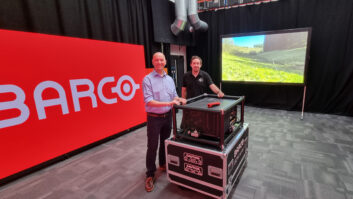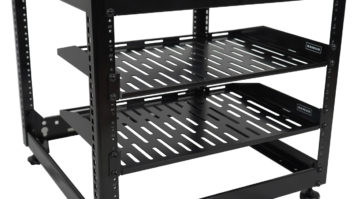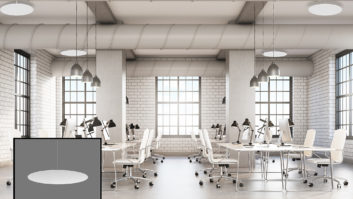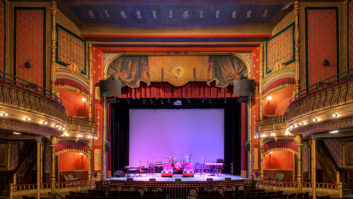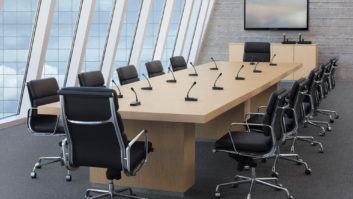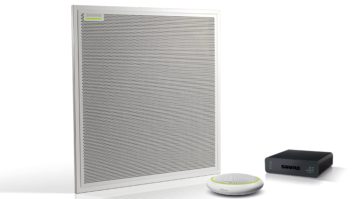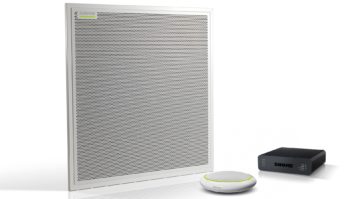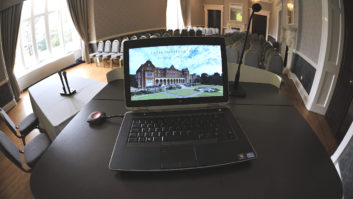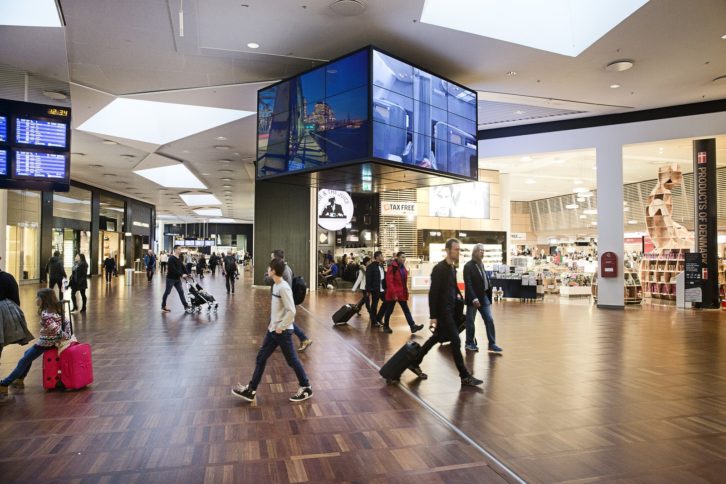
With millions of square feet of video wall being installed annually, and a worldwide screens market estimated to be worth in excess of $100 billion, Ian McMurray finds that it’s easy to overlook what makes it all possible.
AVIXA, the international trade association representing the audiovisual industry, has long been clear that its members are in the business of creating exceptional experiences that deliver outcomes for their customers – and their customers’ customers. Those outcomes are often spectacular. Sound like you’ve never heard before. Ways of working that, only a few years ago, were unthinkable. And stunning, compelling images – on displays, on screens, on video walls.
Spare a thought, then, for the part of the industry whose contribution to these spectacles is almost entirely unseen and unacknowledged – yet without which few, if any, of these experiences would be possible. We’re talking about those who design, manufacture and install the mounting hardware on which almost everything – literally – depends.
“No matter the technology, the biggest pain point is about how to create amazing experiences with content,” believes Kathryn Gaskell, director of product management at Chief. “We want to support that by allowing customers to apply displays in a variety of applications and locations – so being creative with customers on where they might attach a display is the fun part of our business.”
Challenges
Not everything about being a mount manufacturer is fun, however. There are, inevitably, challenges too.
“One of our biggest challenges as a mount manufacturer is low-priced competition and educating people on the differences between commercial and consumer-grade products,” explains Keith Dutch, managing director, EMEA of Peerless-AV. “There are certain cases where purchasing decisions are based on price only, which is frustrating for us as we know the pitfalls of such choices. There have been examples recently where mounts have failed or fallen off the wall, damaging expensive screens and causing concern for public safety.”
Unsurprisingly, given their safety implications, there are standards with which mount manufacturers must comply.
“As a global brand operating in all markets around the world, products must be designed and tested to various standards and safety regulations, such as TUV, UL, ADA to name just a few,” notes Mark Walker, director of operations (UK) for B–Tech AV Mounts. “These can vary from country to country and from one industry to another, so it’s important to have rigorous testing procedures in place and good knowledge of local markets to make sure products meet all standards worldwide.”
For Stuart Lockhart, director at Vision Audio Visual, one challenge is to educate customers about how the mounts market is changing.
“There are many who still prefer big black chunky mounts which holds us back somewhat, as that look is typical of first generation AV equipment,” he says, “whereas the consumer world is significantly further ahead in aesthetic design. With our new VFM-F10 floorstand we’ve really tried to create a more dynamic, more refined design better suited to the displays that are emerging onto the market today.”
Visual appeal
Many in the industry note that modern screens are far lighter per diagonal inch than were their predecessors – and that can enable greater attention to the visual appeal of a mount.
“Compared to five years ago, screens are much lighter, so mounts don’t need to support as much weight,” confirms Bill Ennis, general manager at OmniMount. “As an example: five or six years ago, a 65-inch screen may have needed a mount capable of supporting 120 pounds. Today, you could put that same size screen on a mount that supports 80 pounds.”
That said: John Whittle, director at Loxit, points out that larger screens and touch screens are significantly heavier than standard displays.
“Our mounts accommodate screens up to 98-inch and up to 170 kilos,” he says. “The advent of heavy touchscreens and large-format displays with the accompanying additional weight has created a niche product range of wall to floor mounts. These hybrid mounts transfer the weight of the screen to the floor rather than the wall. The wall brackets incorporate multiple fixing points and can span a wide area if required to prevent point loading of the wall, ensuring a safe installation.”
It’s not just about weight when it comes to interactive displays.
“Interactive displays need to be accessible to all – so height adjustable solutions are important,” believes Gaskell. “We have a variety of solutions to meet this need.”
“Larger video walls are exciting to install,” she goes on, “but we need to take the wall out of the equation for our customers. Walls are never perfect, so making sure the mount is easy to align and save time on installation is important to our customers.”
Innovation
Whittle too has seen the rise to prominence of video walls.
“There has been a lot of innovation in the displays sector in recent years and that has driven development in the mounts sector too,” he points out. “Over recent years, video walls have really taken off in a wide variety of spaces and in increasingly elaborate configurations. As people expect large scale high resolution displays that make the maximum impact, bezel-less panels with tight joint spaces are very popular.”
A recurring theme among mount manufacturers, however, is the challenges created not only by the proliferation of screens, but also the increasingly creative ways in which they’re being deployed – meaning that a ‘one size fits all’ approach is becoming less sustainable.
“Technology rarely stands still for very long, and our product portfolio covers solutions that simply did not exist several years ago,” explains Walker. “Ultra-stretch displays, curved solutions and, of course, LED have all made a large impact on the market and we, as mount manufacturers, need to address those requirements. The need for traditional 2×2 or 3×3 configurations is very much still there, but we are seeing displays mounted in more and more creative ways, and our product portfolio reflects that. In the very rare cases of us not having a suitable solution in stock, we are happy to create bespoke mounting solutions for large projects.”
“Our customers are being more inventive in their project designs,” notes Whittle, “meaning we engage in more and more custom designed solutions on a project basis.”
“Users obviously want a safe and reliable mount, but they’re also looking for flexibility,” believes Ennis. “Screens are being mounted anywhere and everywhere, and this challenges manufacturers to come up with products to meet a variety of needs. It’s easy to hang a screen on a flat wall – but to mount it in a corner or from a ceiling can require special products.”
David Jopling is managing director of Unicol. “There are probably more requests for a custom mounting solution than ever before, and the challenge for us remain the same,” he says, “which is to deliver both standard products alongside high end complex custom-made items within short lead times.”
